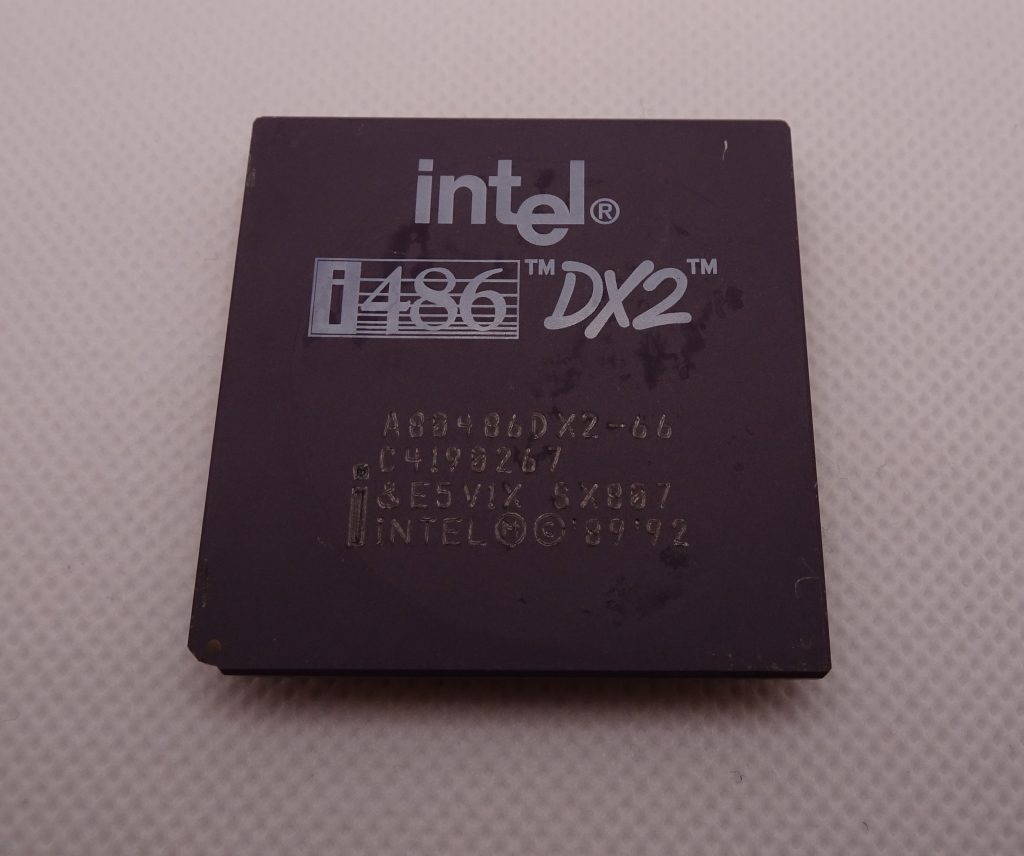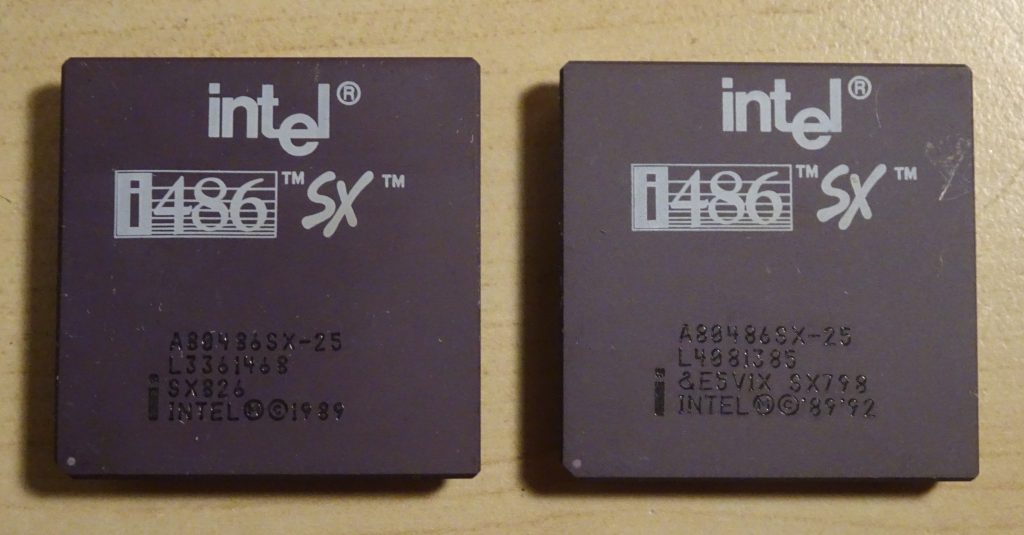The 486DX series were the complete, full-performance versions of the 486 processor line. Unlike the low-cost 486SX, the DX versions contain an FPU, which significantly speeds up floating-point calculations compared to the earlier 386. In 1992 Intel delivered another huge leap in performance by simply doubling the clock frequency of the 486 core from 33 to 66 MHz. Motherboards at the time could not cope with such high speeds, so the bus clock remained at 33 MHz. Although 40 and 50 MHz speeds were also available, the 66 Mhz version was by far the most common and remained the processor of choice for most high-performance 486 computers until Pentium systems became mainstream around 1995.


